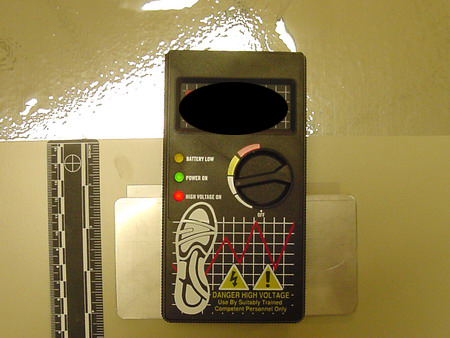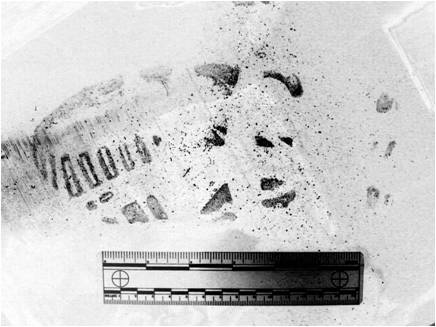As people move throughout a scene, dust and other particulate matter can be transferred from the respective footwear (or other objects) to various surfaces that have been walked upon. Electrostatic dust print lifting devices give the scientist the ability to enhance, collect and preserve such impressions.
Electrostatic dust print lifting devices operate by charging a plastic film, placed over the dust print, which creates electrostatic adhesions and draws the film onto the surface bearing the print. The dust particles are attracted to the film because of this charge and adhere to it. The film retains a charge after the unit is turned off, thus retaining the particles of dust. The print must be composed of loose residue, and the residue must be dry for this process to work. Also, a proper ground must be achieved when applying the electrical charge. On some surfaces it is difficult or impossible to achieve a ground and the procedure will not work, necessitating alternative lifting methods.
The top image shows one type of electrostatic dust print lifter in use. It is on a conductive surface, requiring the use of a grounding plate held off the surface with a nonconductive sheet while applying a charge to the silver-backed lifting media. Below is a footwear impression on a metal surface (left) and the resultant lift (photograph enhanced). Note that the lift is a mirror image of the actual impression.




